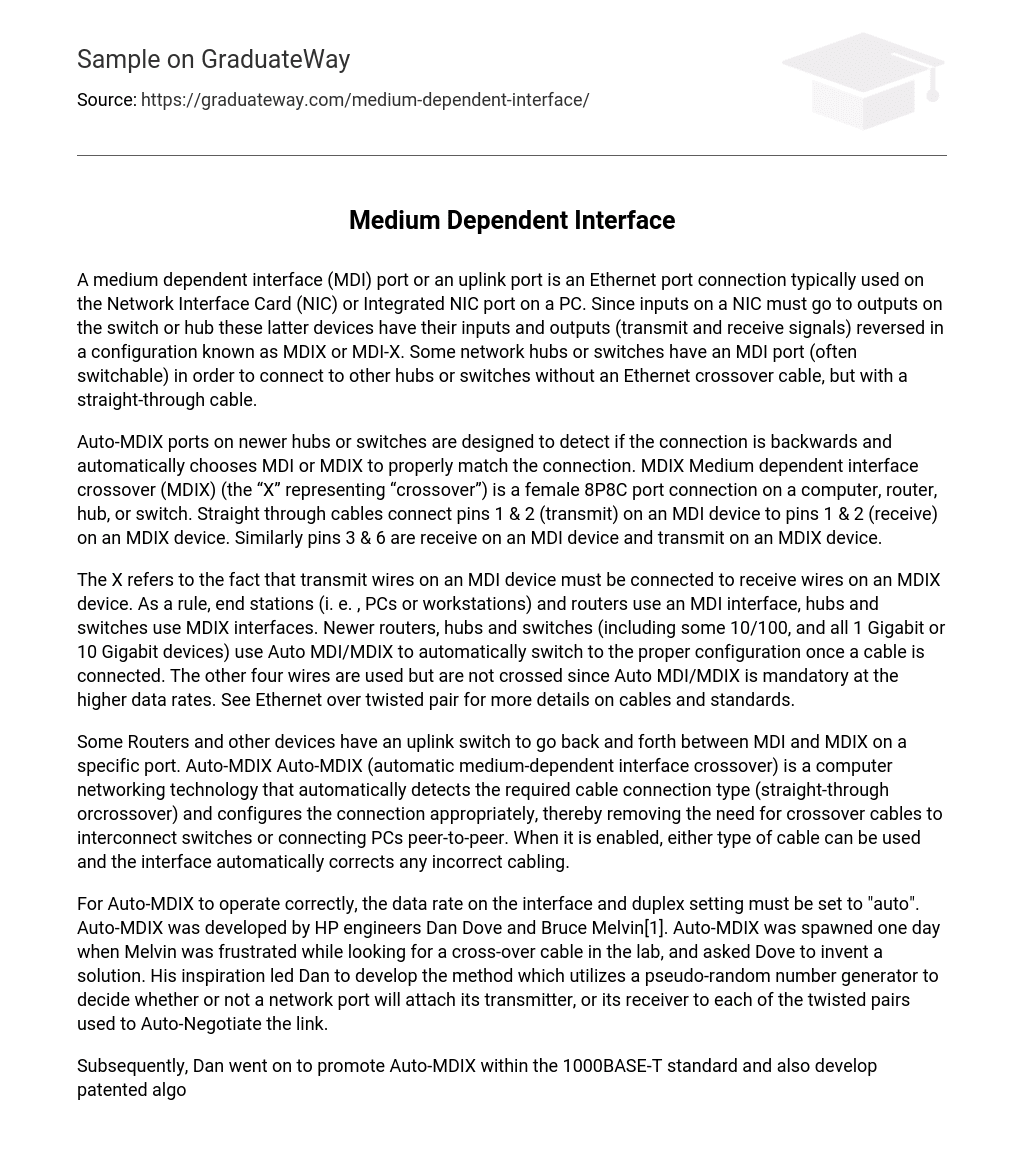A medium dependent interface (MDI) port or an uplink port is an Ethernet port connection typically used on the Network Interface Card (NIC) or Integrated NIC port on a PC. Since inputs on a NIC must go to outputs on the switch or hub these latter devices have their inputs and outputs (transmit and receive signals) reversed in a configuration known as MDIX or MDI-X. Some network hubs or switches have an MDI port (often switchable) in order to connect to other hubs or switches without an Ethernet crossover cable, but with a straight-through cable.
Auto-MDIX ports on newer hubs or switches are designed to detect if the connection is backwards and automatically chooses MDI or MDIX to properly match the connection. MDIX Medium dependent interface crossover (MDIX) (the “X” representing “crossover”) is a female 8P8C port connection on a computer, router, hub, or switch. Straight through cables connect pins 1 & 2 (transmit) on an MDI device to pins 1 & 2 (receive) on an MDIX device. Similarly pins 3 & 6 are receive on an MDI device and transmit on an MDIX device.
The X refers to the fact that transmit wires on an MDI device must be connected to receive wires on an MDIX device. As a rule, end stations (i. e. , PCs or workstations) and routers use an MDI interface, hubs and switches use MDIX interfaces. Newer routers, hubs and switches (including some 10/100, and all 1 Gigabit or 10 Gigabit devices) use Auto MDI/MDIX to automatically switch to the proper configuration once a cable is connected. The other four wires are used but are not crossed since Auto MDI/MDIX is mandatory at the higher data rates. See Ethernet over twisted pair for more details on cables and standards.
Some Routers and other devices have an uplink switch to go back and forth between MDI and MDIX on a specific port. Auto-MDIX Auto-MDIX (automatic medium-dependent interface crossover) is a computer networking technology that automatically detects the required cable connection type (straight-through orcrossover) and configures the connection appropriately, thereby removing the need for crossover cables to interconnect switches or connecting PCs peer-to-peer. When it is enabled, either type of cable can be used and the interface automatically corrects any incorrect cabling.
For Auto-MDIX to operate correctly, the data rate on the interface and duplex setting must be set to “auto”. Auto-MDIX was developed by HP engineers Dan Dove and Bruce Melvin[1]. Auto-MDIX was spawned one day when Melvin was frustrated while looking for a cross-over cable in the lab, and asked Dove to invent a solution. His inspiration led Dan to develop the method which utilizes a pseudo-random number generator to decide whether or not a network port will attach its transmitter, or its receiver to each of the twisted pairs used to Auto-Negotiate the link.
Subsequently, Dan went on to promote Auto-MDIX within the 1000BASE-T standard and also develop patented algorithms for “Forced Mode Auto-MDIX” which allows a link to be automatically established even if the port does not auto-negotiate. When 2 Auto-MDIX ports are connected together, which is normal for Gigabit Ethernet, the algorithm resolution time is typically < 500 ms. However, a ~1. 4 second asynchronous timer is used to resolve the extremely rare case (with a probability of less than 1 in 1021) of a loop where each end keeps switching. [2]





